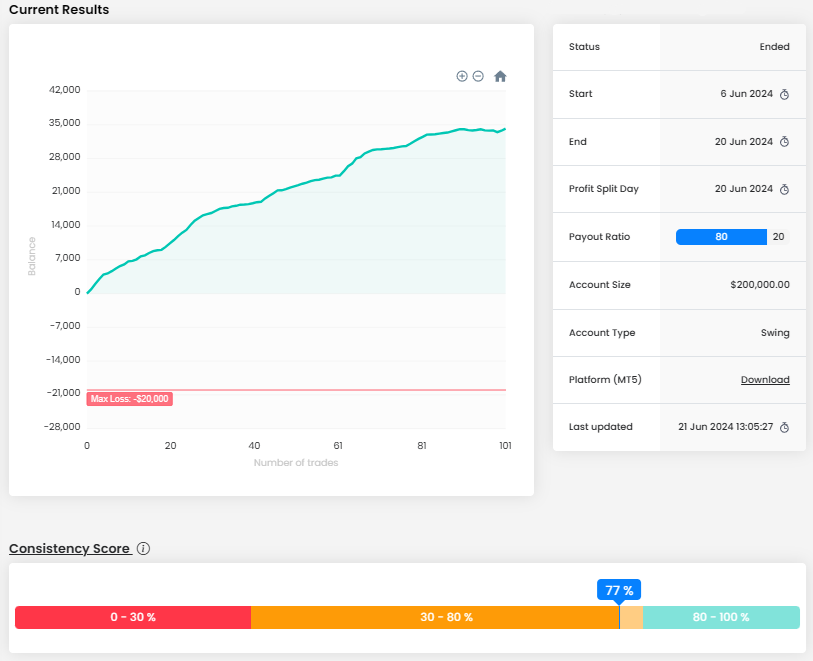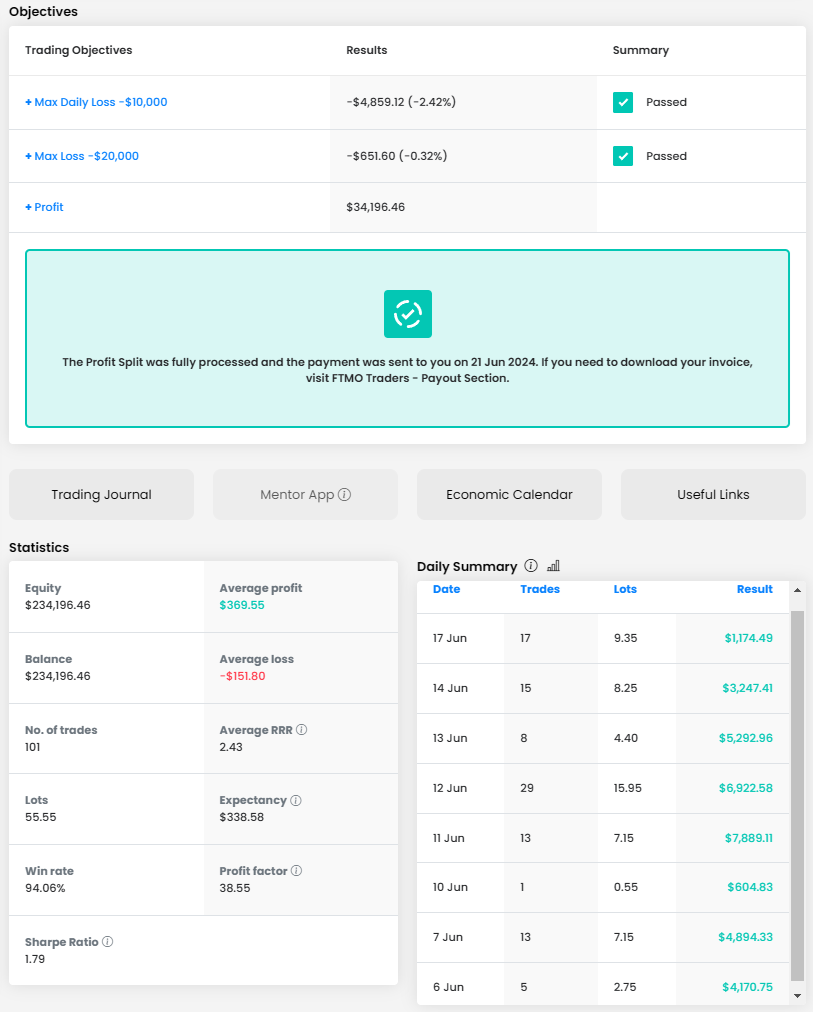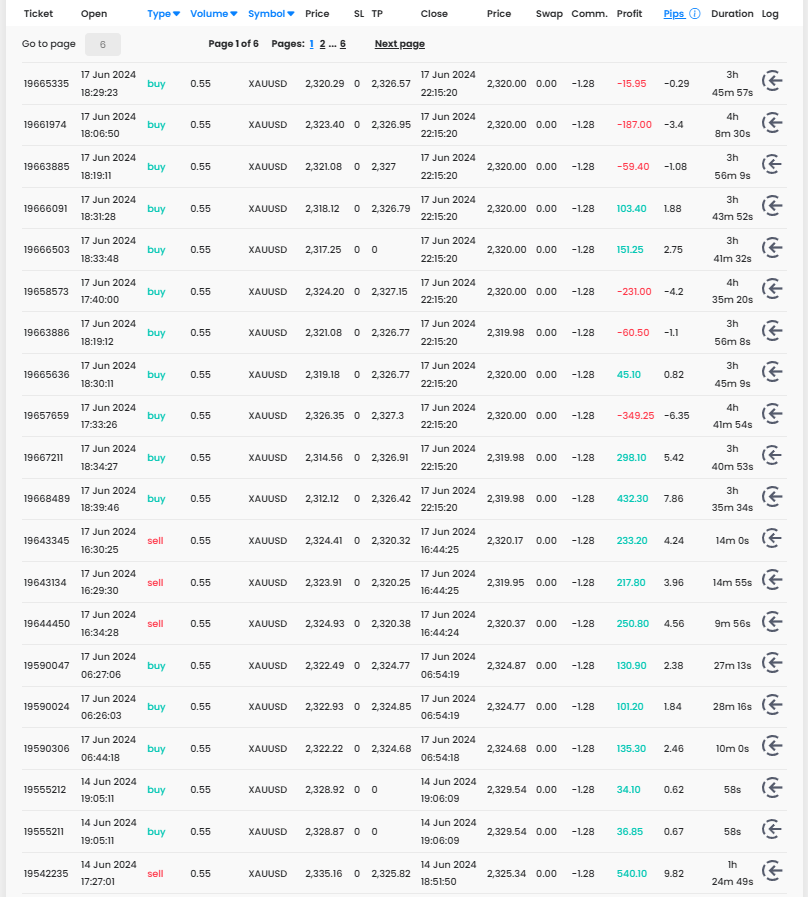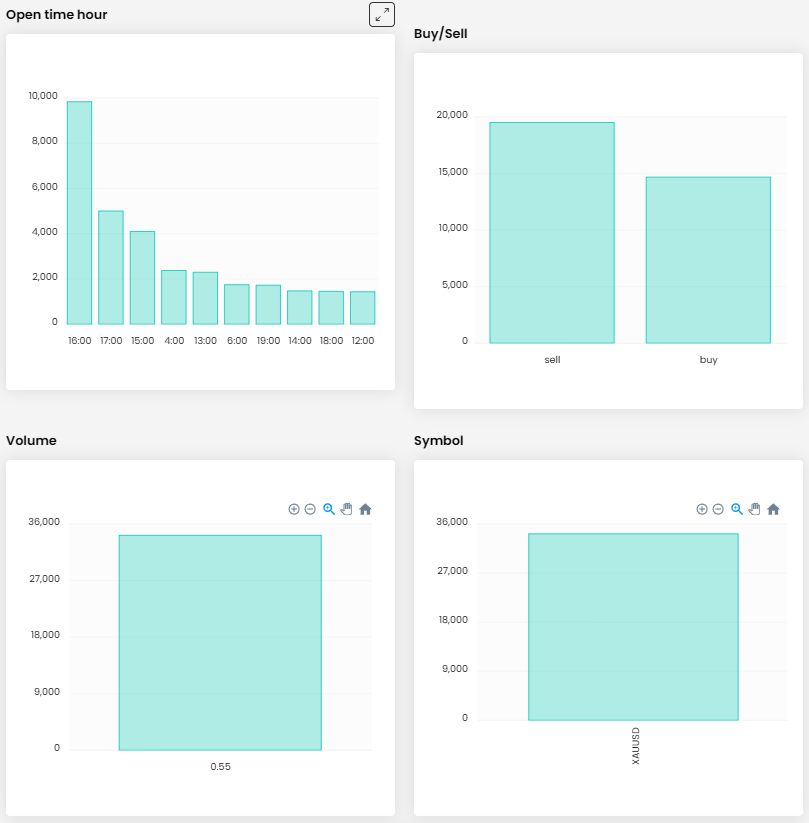
100% success in Trading is unrealistic, but you can try
In the next part of the series about successful FTMO Traders, we will have a look at a trader who managed to do what every forex trader hopes for. Reaching a trading success rate of over 90% is not something just anyone can achieve.
Relying on the fact that we will achieve 100% success in trading is not a good idea. We remind our clients at every possible opportunity that trading without losses is not possible, and every trader has to learn to live with it. The sooner you learn to accept losses as a normal part of trading, the sooner you can become a consistently profitable trader.
The trader we will look at today was not far from an ideal trading period, but he did make some losing trades. However, his balance curve looks almost perfect, and a very slight drop can be seen at the very end of it. The high consistency score then only underlines the very good result.

Given the result, it is not surprising that the trader had no problem with the Maximum Daily Loss or Maximum Loss limits. The total profit is over $34,000, which at this account size is just over 17%, and that is a very good result. As mentioned above, this great result is mainly due to a very high trade success rate of over 94%, combined with a good RRR of 2.43.
The trader traded only eight trading days and executed 101 trades for a total of 55.55 lots, which means 0.55 lots per trade. Given the size of the account, this seems like a very conservative approach, but the trader usually opened multiple positions, so the total position size could have been around 6 lots. Still, this is not critical.

The journal shows that he is a classic intraday trader who in the vast majority of cases does not hold positions overnight and keeps them open for several hours. The magnitude of the gains and losses are relatively low, but given that the trader was opening multiple positions at once, or opening additional positions over time, the potential losses could have been much higher.
This is the case with the trader's Maximum Daily Loss, which was $4,859.12 and was caused by multiple open positions at a loss. Since the trader does not enter Stop Losses on his trades, such trading can be quite dangerous. Therefore, a trader must have mastered at least some form of "mental" Stop Loss to prevent him from making unnecessary losses.

The trader was fairly consistent in opening positions in both directions and traded only one instrument, which was the long-term favourite gold (XAUUSD). And just as he did not diversify in terms of investment instrument selection, he practised the same with position size, opening only 0.55 lots. He then matched the total position size only by the number of open positions, which can make entering the markets much easier.

Although the trader's curve looks almost perfect at first glance and the trader realized his few losing trades only on the last day of the trading period, even in this case we cannot avoid criticism. As we have already mentioned, the trader very often opened multiple positions and tried to increase the profit potential of his trades, which he simply trusted. Such an approach is not problematic in itself and when more experienced traders can use it to their advantage, it can have a positive effect on the trader's overall results. On the other hand, it can increase risk if a trader uses this approach in a non-trending market, or if he simply opens positions when his trade is in a losing position.
Opening additional positions at a loss is generally not recommended for traders, because when the market goes against the trader in the long term, it can have a very negative effect on his account. For opening positions in a profitable trade, then, it is very important to have a clear plan and to "feed into" a strong trend, where such an approach can even increase profit potential without increasing risk. In the case of our trader, however, things looked a little different.
The first case looks pretty good, the trader opened eight positions consecutively, with all subsequent positions opened at a time when those previously opened would have been in profit or at least at zero. The trader was speculating on the upside after the gold price bounced off the support level after falling from all-time highs. He built up the position over two days (it was the only time he held the position overnight) and then closed all eight trades at a Take Profit with a total profit of just over $8,000. Not much to criticise here.

We cannot praise the second example too much, because in this case the trader has already taken more risks than we would like. In the end, he ended up in profit again, but especially the second trade without Stop Loss could have done a lot of damage.

Although the total immediate loss was not that high at the point when the price was at its highest, but given that the trader opened subsequent trades at the time of important US news releases (Initial Jobless Claims and PPI) and the price was very volatile, the outcome was really uncertain. In the end, it worked out well, but opening additional positions in highly volatile markets for less experienced traders is really not recommended.
Note: Since we cannot clearly define the exact trader's strategy from the chart, this is only the private opinion of the author of this article. FTMO Traders are free to choose their strategy and as long as they do not explicitly violate our Terms and Conditions and follow our risk management rules, the choice of strategy and execution of individual trades is up to them.
About FTMO
FTMO developed a 2-step Evaluation Process to find trading talents. Upon successful completion you can get an FTMO Account with a balance of up to $200,000. How does it work?.










